Most average Joes see ducks as the cute little fellas at the local pond that Nana takes the grandkids to feed with scraps of bread (which you should never-ever do!). Truth be told, they are great for eggs, meat, and fertilizer.
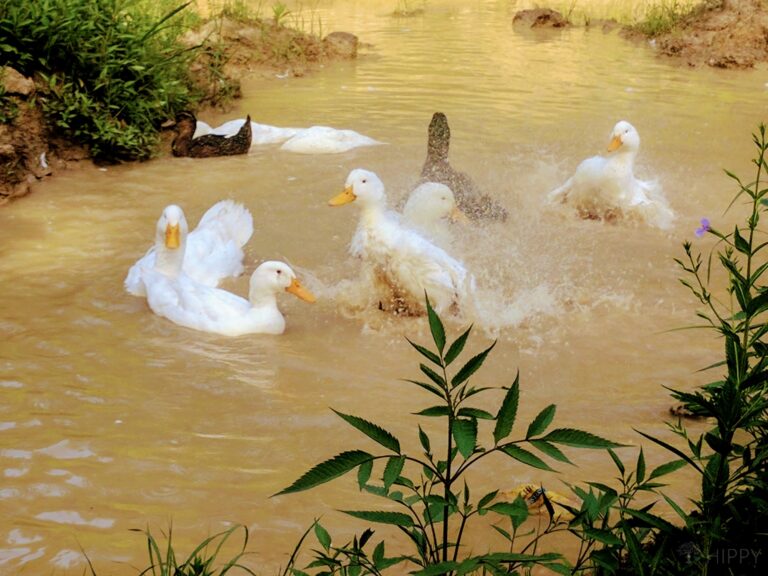
The first thing you need to do is think carefully about what you plan for the ducks. Do you want meat, eggs, fertilizer, or a sweet attraction for the kids?
Ducks are very little maintenance, and their sweet nature makes them ideal pets for little ones to learn responsibility, and to showcase their pet ducks at duck or pet shows.
Different breeds are valued for their specific characteristics. I have some valuable knowledge of most species, but I will cover the most popular breeds to guide you to the right birds for your homestead.
When choosing the right breed for your homestead you should consider egg production, temperament, foraging ability, meat production, flight ability, and conservation status.
You will see that many of the breeds are listed as being on the watch list, at risk, or in danger of becoming extinct. This refers to The American Livestock Breeds Conservancy. You should always consult with them if you are wanting to raise ducks.
Table of Contents
Pros of Duck Ownership
Owning ducks has its ups and downs. There are distinct pros to raising ducks, particularly over chickens:
- ☑ The eggs are larger than chicken eggs
- ☑ The eggs are more nutritious than chicken eggs
- ☑ The eggs sell for a higher price than chicken eggs
- ☑ They have a stronger constitution than chickens
- ☑ They are less susceptible to respiratory issues
- ☑ They are lower maintenance than chickens
- ☑ Ducks do not use nests as they lay their eggs on the ground
- ☑ They do not need perches
- ☑ They need clean water and, when needed, extra food
- ☑ Their poop is a great fertilizer
Cons to Duck Ownership
Duck ownership also has significant cons.
- ❌ Ducks eat more than chickens
- ❌ Ducks are very messy
- ❌ They deliberately tip their water bowls to create ponds to swim in
- ❌ They quickly make their drinking water dirty
- ❌ You need 4 to 12 ducks per drake
- ❌ They are known to crossbreed, not just with other duck breeds, but even with chickens
- ❌ They are very noisy
- ❌ They need a good routine and do not like to change
- ❌ They need a swimming pool or pond
- ❌ Because they need more protein, their food is more expensive than chicken food
- ❌ There are regulations regarding breeding with some breeds
- ❌ They take some interaction to form bonds with humans
- ❌ They are harder to process for meat
- ❌ Eggs have a shorter shelf life than chicken eggs
- ❌ Because they nest on the ground, it is harder to find their eggs and the eggs can be very dirty
- ❌ Ducks take a long time to hatch
- ❌ The eggs can be challenging to incubate
In spite of all these cons, owning ducks can be emotionally and financially beneficial. So let’s see what might be the best breed for your needs, shall we?
What is the Best Duck Breed for Eggs?
When it comes to choosing the best duck breed for eggs, there are a few things to consider.
One is the size of the duck. Larger breeds will typically lay larger eggs, so if you are looking for a higher yield, this is something to keep in mind.
Another factor is egg color. Some people prefer white eggs, while others prefer brown.
Duck breeds can vary in the color of their eggs, so this is something else to take into account. Finally, it is important to consider the laying schedule of the duck breed.
Some ducks will lay more frequently than others, so if you are looking for a higher production rate, this is something to keep in mind.
With all of these factors in mind, there are a few duck breeds that stand out as being particularly well-suited for egg production.
Khaki Campbells are known for their high egg output, and their eggs are typically a rich brown color. Pekins are another popular choice, as they also have a high egg production rate and their eggs are generally large and white.
Ultimately, the best duck breed for eggs will depend on your individual preferences and needs. But with a little research, you should be able to find a duck breed that will suit your needs perfectly.
Buff Orpington Ducks
This breed is considered a threatened breed. You should very seriously consider this if you are hoping to raise these ducks for meat.
The reason they are threatened is specifically that people love the taste of the meat. The drakes can weigh up to 8 pounds (3.5 kgs), the ducks can weigh up to 7 pounds (3 kgs).
They are good layers, laying 150 to 220 eggs per year. If you want this breed for the eggs, have at it! … But try to increase the flock as much as possible and sell off birds as your own flock grows.
Educate the people you sell to because there is a great need to breed. I recommend raising these ducks for eggs, and to increase the population.
Buffs love to forage and dunk in ponds for food. Keep them in a protected pasture, pond, or run. They are stunning, friendly birds, that are good show birds and pets.
Magpie Ducks
Named Magpies, these ducks are similar to Magpie birds only in their similar black and white feathers. They are also a threatened breed.
They are great layers, laying 200 to 290 medium-sized, white eggs per year.
They only weigh 5 to 6 pounds, so they will not provide much meat, but they are popular for their tasty meat. They are not good flyers but love to forage and dunk for meals.
You should have no less than 5 ducks per drake as the drakes can be quite aggressive when mating. It is important that you interact with ducklings a lot from the time they are born to build trust because they can be somewhat timid and wary of people.
Please remember to allow them to breed beyond the number of birds you slaughter to help restore the numbers of these threatened ducks.
Blue Swedish or Swedish Blue Ducks
Swedish ducks are brilliant free-range birds. They love to forage, and enjoy having a lot of space to move around in. They are not really flyers, but they do not do well locked up in small pens.
They are great dual-purpose ducks producing a steady supply of eggs for your homestead and providing good quality meat.
However, they are on the watch list. If you are planning to raise these ducks for meat, you should replenish by providing a safe environment to breed in.
Swedish ducks lay 100 to 150 large white to green eggs per year. They are excellent mothers, providing excellent care to their chicks.
Drakes weigh about 9 pounds, and females weigh about 7 pounds. They do very well in cold areas and come in blue, green, grey, and black colors.
They are very calm and friendly birds. They are great for pets and for shows.
Dutch Hookbill Ducks
The Dutch Hookbill is considered a critically endangered duck. If you want to help, contact your local wildlife association and find out what their standards are, and where you can acquire these ducks.
They are very small ducks weighing in at 3 ½ to 6 pounds. They have a stunning hooked bill that clearly identifies them from other breeds. They lay 100 to 225 large white to blue-green eggs per year.
It is hard to keep these ducks grounded because they are good flyers and love to roam to forage in pastures and natural ponds.
If you do not want to let them come and go whenever they like, your pen will have to be roofed in and very large, including a pond – especially if you are looking to help the population.
Bali Ducks
The Bali duck is on the endangered list. If you want to keep ducks to help build up the numbers, the Bali duck is very worthy of your time and attention.
These stunning white ducks have one of the funniest features that make them the cutest ducks alive! On the back of their heads, they have what looks like a fluffy bun of feathers. They are perfect ornamental ducks who do exceptionally well at shows.
They weigh 4 to 5 pounds and lay 120 to 150 eggs per year.
They are not flyers preferring to forage in one area. They are not very attentive to their offspring.
They are upright birds like Runner ducks, but they have wider shoulders and a heavier frame.
If you want to keep Bali ducks, you will definitely need to speak to your local wildlife authorities about becoming a breeder.
You will need to invest in an incubator and learn as much as you can about breeding because these ducks can be tricky to breed.
Mallard Ducks
Mallards are beautifully colored. The drakes have glossy green heads with grey on their wings and bellies. The ducks have brown speckled heads and bodies. Drakes and ducks both have white with black or iridescent blue feathers on their wings.
They can easily be hand-reared making them different from other ducks. This makes them very trusting of people and easy to tame.
Mallards lay about 180 blue or green eggs per year. When left to breed a duck will have 8 to thirteen ducklings at a time.
They are very social ducks, preferring to gather in flocks rather than look for privacy or independence.
They are very adaptable to their environment thriving wherever they find a pond and a paddock to forage for food. They are mainly dabbling ducks, so a pond for them is a must.
They easily crossbreed with other species and the offspring are fertile.
Golden 300
The Golden 300 duck breed hybrid is a relatively new breed that was developed in the United States. This breed is a cross between the Pekin and the Rouen, and it was created with the goal of producing a duck with excellent egg production.
The Golden 300 has achieved this goal, and it is now one of the most popular breeds for egg production. In addition to its high egg output, the Golden 300 is also known for its docile nature and its beautiful plumage.
As a result, this breed has quickly become a favorite among farmers and backyard enthusiasts alike.
What is the Best Duck Breed for Meat?
For those looking to raise ducks for meat, there are a few key considerations.
First, you’ll want to choose a breed that reaches butcher weight quickly. Second, you’ll want a duck that is hearty and resistant to disease.
And finally, you’ll want a duck with good flesh quality. The best breeds for meat production tend to be larger breeds like the Pekin or the Muscovy.
However, smaller breeds like the Khaki Campbell can also be quite productive. Ultimately, the best breed for you will depend on your specific needs and preferences.
Rouen Ducks
Rouen ducks are on the watch list. They are mainly bred for meat as they weigh 8 to 10 pounds.
They are sweet-natured pets that are very social and bond well with humans. Their beautiful colors enrich any yard.
They cannot fly much because of their weight. As long as your garden and vegetable garden are properly fenced in, your Rouen’s will not be causing much trouble eating your food supply or flowers.
Because of their size, they will need a pond to safely mate. They only lay 60 – 120 eggs per year.
They pretty much take care of themselves foraging and dunking for food.
Duclair Ducks
Duclair ducks are primarily bred for their meat.
These ducks are black or blue with a white feather on each wing and a white bib. The drakes have an iridescent green head, while the ducks have a black head.
They are fairly good layers, laying 130 to 200 blue or green eggs per year.
The drakes weigh about 7 pounds and the ducks weigh about 6 pounds. They grow to slaughter weight between 8 to 12 weeks.
They are good foragers because they are not good flyers. They have a calm demeanor, are excellent mothers, and perfectly fabulous pets and show birds.
Muscovy Ducks
Muscovy ducks have a very distinctive look. They have bright red flesh around their beaks that extends over the feathers. They have an extra claw on each foot enabling them to perch, which they love to do.
They are not very talkative, communicating by bobbing their heads and making low hissing noises. They are very easily distinguished by their looks and by their size.
Males can weigh 12 pounds or more. Females weigh roughly 6 pounds. They have one other distinguishing characteristic; they perch at night to sleep. They are mostly raised for their meat due to their size and because they do not lay as many eggs as other breeds.
They have a bit of a wild side. They behave in a very confident way, very much like wild birds. They do startle and take off immediately if they detect danger.
If these ducks are crossbred with other ducks, the offspring will always be sterile. The sterile offspring is automatically raised for meat.
They lay only 150 to 180 eggs per month.
They are good foragers, and love swimming and dunking for food.
The drakes can get rough when mating, for this reason, you should have at least 5 ducks per drake.
Alabio Ducks
The Alabio duck is a popular Indonesian duck. These are great dual-purpose ducks.
They are not very big, reaching just 3.3 to 4.4 pounds (15. – 2 kgs). That means they do not produce a lot of meat, but the meat is succulent and tasty.
The ducks lay 200 to 250 eggs per year. They are good mothers for breeding and raising their ducklings.
They can fly very well and flourish in warmer temperatures.
They look similar to Runner ducks in their upright stance but have yellow bills.
What is the Best Dual-Purpose Duck?
If you’re looking for a versatile duck that can excel in both egg production and meat production, then the best dual-purpose duck is the Pekin.
Pekins are fast-growing birds that can reach a weight of up to eight pounds, making them ideal for both eggs and meat. In addition, Pekins have a high feed conversion ratio, meaning they require less food to produce eggs or meat than other duck breeds. Pekins are also good foragers and can be kept on pasture if desired.
However, because of their large size, Pekins are not as well-suited for small backyard flocks.
If you’re looking for a smaller dual-purpose duck, then the Ancona is a good choice. Anconas weigh three to four pounds and lay up to 200 eggs per year. They are also good foragers and do well on pasture. However, Anconas are not as cold-hardy as some other duck breeds and may need extra protection from the elements in winter.
Ultimately, the best dual-purpose duck for your flock will depend on your specific needs and preferences.
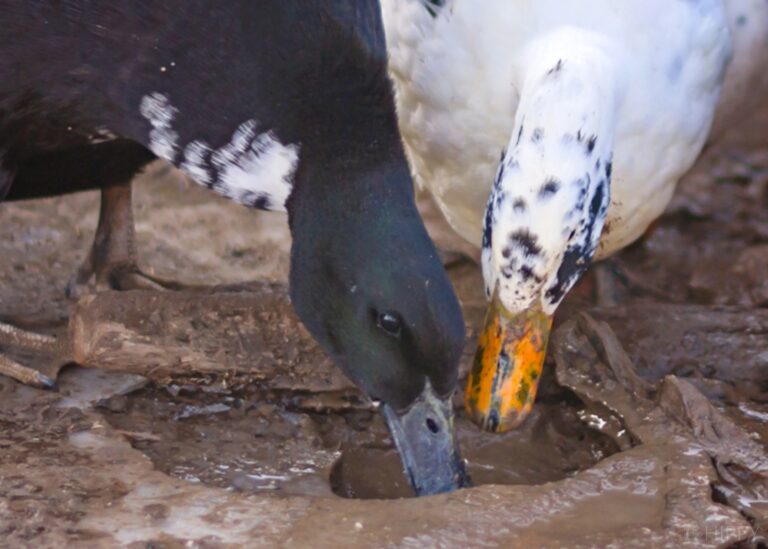
Ancona Ducks
Ancona ducks are not good flight birds. They do well in enclosed pastures, ponds, or in enclosed runs that protect them from predators.
They need a lot of space because they love to run and forage.
Ancona’s lay an average of 210 to 280 eggs per year. The eggs are colorful, ranging from white that is tinted blue and or green and spotted.
Male Ancona’s grow to be roughly 5 to 6 ½ pounds, females weigh less. Their meat is lean, tender, and very juicy.
Ancona ducks are making a comeback off of the critically endangered list. Homesteaders have been very instrumental in restocking the population. Currently, they are on the watch list, so, please do your part to help this breed.
They have beautiful colorful plumage ranging in white, black, buff blue, lilac, chocolate, silver, and lavender. Their feet are orange while they have yellow bills that may have spots or patches.
Ancona ducks are a very friendly breed. They make great pets because of their calm, friendly nature.
They do not like to wander far from home, partly because they cannot fly very well, but mostly because, well, home is where the duck food is.
Silver Appleyard Ducks
Also a threatened breed, responsible homesteaders can help the breed, while getting eggs and meat from the Silver Appleyard.
They have been farmed for meat because they reach a weight of 8 to 9 pounds and farmed for eggs because they lay 200 to 270 large eggs per year.
They are not very broody but do make great mothers. They are very self-sufficient and are excellent foragers. They are strikingly beautiful, colorful birds.
Saxony Ducks
Saxony ducks are hands down the prettiest ducks around – in my opinion anyway. The breed is threatened, so please be responsible and help replenish the breed stock.
Saxony ducks are bred for their meat and for their eggs. They weigh 8 to 9 pounds and lay 190 to 260 extra-large eggs per year. The eggs are white to blue-green.
It takes some time to raise them to a good slaughter size, but the meat is high quality and very lean.
These ducks are good breeders – when given the chance – and the mothers tend well to their chicks.
They are very calm to work with and are good foragers. Protect their paddock or keep them in a large run and they will take care of themselves.
As pets and as show ducks, these are among the most popular breeds because of their gorgeous light brown blends and their sweet nature.
Khaki Campbell Ducks
If you are wanting to start a little homestead-based business selling eggs, you cannot go wrong with the Khaki Campbell.
These professional layers lay more than 300 eggs per year!
Thanks to their laying capabilities, they are great breeding ducks. However, that is where their maternal instincts end.
They expect their newly hatched ducklings to come out fully adapted, and ready to care for themselves. The ducklings will follow her around, but she will be aloof or indifferent to them.
They are very independent, quiet birds that can be very hard to win over. Sometimes they just do not like or trust humans. But they can be very calm ducks that do not startle easily and are quite easy-going around people.
Because of the size and taste of their eggs, the eggs sell for more than double the price of chicken eggs. Khaki Campbells begin laying their eggs at 6 months old. The hens lay eggs up to the age of 5 years old.
There is very little adjustment needed when introducing them to an existing flock. They quickly learn to blend into the day-to-day routines.
Once they settle in, they make excellent brooders and form lasting relationships – even lifelong bonds – with other safe animals, such as chickens, guinea fowls, or quails.
They grow to be 4 to 4 ½ pounds, which is not much for slaughter, but their meat is very moist and tasty.
Aylesbury Ducks
While Aylesbury’s are popular for meat, they are at critical risk currently with very low population rates.
If you are looking to help the breed, get some Aylesbury’s. Make sure they are well protected from predators. Let them breed!
Do not harvest all their eggs. Let the ducks sit on the nests and hatch out a batch from time to time. You will be doing nature a massive favor by keeping these ducks from complete extinction.
Drakes can weigh up to 10 pounds and ducks can weigh up to 9 pounds. This is the main reason they are used for meat. They gain weight very quickly, making them popular for meat production.
They are a very calm breed in spite of their love to run. They are not good flyers. They are not easily scared of humans.
They are large birds that should be kept in a good-sized run with plenty of good foraging. They are a bit lazy when it comes to successful foraging, they will need you to add extra food to their diet.
If you are raising them for meat – and I bring this up hoping that you are allowing more breeding to raise the population and replenish the flock – you will need to supplement their feed to gain the weight properly.
They do have a tendency to be obese. Limit the feed you give them and encourage them to eat vegetables and to forage. They are not fantastic layers. They lay 35 to 125 extra-large eggs per year.
You will need to monitor the nesting situation as some Aylesbury’s are not good mothers. You may need to incubate the eggs yourself to ensure population growth.
Hook Bill Ducks
Hook Bill ducks are a great beginner duck.
They are used for shows, meat, and eggs. (Please note that they are endangered – do not breed Hook Bill ducks for meat, once your flock has grown substantially, then you can raise some for meat.)
They are at great risk of extinction, so, if you can help, what are you waiting for? Jump into the restoration of this beautiful breed.
They lay 100 to 200 blue eggs per year. The drakes weigh 4.4 to 5 pounds, the ducks weigh 3 ½ to 4.4 pounds (around 2 kgs). Their colors range from dusky blue, dirty white, and bibbed dusky blue.
These ducks are very funny-looking, with elongated beaks that curve downwards. They are easily tamed.
Abacot Ranger Ducks
This is a breed that could really use every helping homesteader’s hand interested in protecting the population. They are extremely rare but still are considered dual-purpose ducks for their meat and for their eggs.
They are beautiful with an array of different browns, greens, black, and white. The ducks have a buff-colored hood while the drakes have an iridescent hood during the breeding season.
It is very easy to sex the Abacot Rangers offspring. At about 8 weeks, the males have an olive-green bill while the duck’s bills are dark slate grey.
They are not very good flight birds, preferring to forage.
They lay 180 to 200 eggs per year. They are reasonably good mothers, even babysitting each other’s young so that mom can take some time off for a peaceful dip in the pond.
They weigh 5 ½ to 6 ½ pounds (around 2-3 kgs). They do not have as much meat, or as little meat as so many other breeds. However, their meat is delicious.
Shetland Ducks
Shetland ducks are considered critically endangered. They are one of the rarest breeds globally. To raise these ducks, you need to consult your local wildlife conservation society to find out as much information as possible about the breed.
You will need to be a very dedicated breeder to take on the Shetland.
They are very small ducks; the drakes weigh about 4.4 pounds while ducks weigh about 4 pounds.
They lay about 150 extra-large, white, grey, or green eggs per year.
They are black-colored birds; some birds have a white bib. The duck’s feet and beaks are black while the drake’s feet are yellow or black with dark olive-green bills.
They are very independent in finding food for themselves. They forage for food.
The Shetland is a very hardy breed that thrives in extremely cold environments.
They have a very sweet nature, being calm and friendly pets. They are not good flying ducks, but occasionally they will fly if they are in danger.
Pekin Ducks
Asia put these birds on the culinary map. These are stout, white ducks that are bred for their meat. They are also high egg producers, laying roughly 200 eggs per year.
They are easy to raise whether you raise them on feed or on pasture. They are ready for slaughter when they are about 10 pounds.
Cayuga Ducks
Cayuga ducks are on the American watch status. This means that the breed is becoming at risk due to human and predatorial consumption. They are bred for meat and eggs.
They can weigh 7 to 8 pounds. One thing they have going for them in the meat industry is that their black skin makes them undesirable to commercial processors.
Cayuga ducks are stunning. They are probably the most popular breed for broody teenagers. These ducks are solid black from top to tail and everything in-between. They even lay black eggs.
They also lay more than 100 to 150 eggs a year. In winter and the beginning of spring, the eggs will be dark black and as the year progresses the eggs will be lighter in color.
They are good breeders that love to forage and dunk in ponds. It is best to keep them in a very large run. They need a lot of shade to prevent them from overheating because their black bodies attract the heat of the sun.
Which Breed of Duck Should I Raise if I Just Want Pets?
If you’re looking for a pet duck, the options can seem overwhelming. There are dozens of different breeds, each with its own unique appearance and personality. So, how do you choose the right one for you?
While it’s ultimately a personal decision, there are a few things to keep in mind.
One is whether you want a duck that lays eggs. If so, breeds like the Ancona or Khaki Campbell are good choices. However, if you’re just looking for a companion, you might prefer a breed like the Pekin or Rouen.
Another consideration is whether you have kids or other pets. Some ducks can be quite aggressive, so it’s important to choose one that will get along well with your other family members.
Ultimately, the best way to choose a pet duck is to visit a local farm or hatchery and meet some of the ducks in person. That way, you can get a sense of their personalities and decide which one is the best fit for your home.
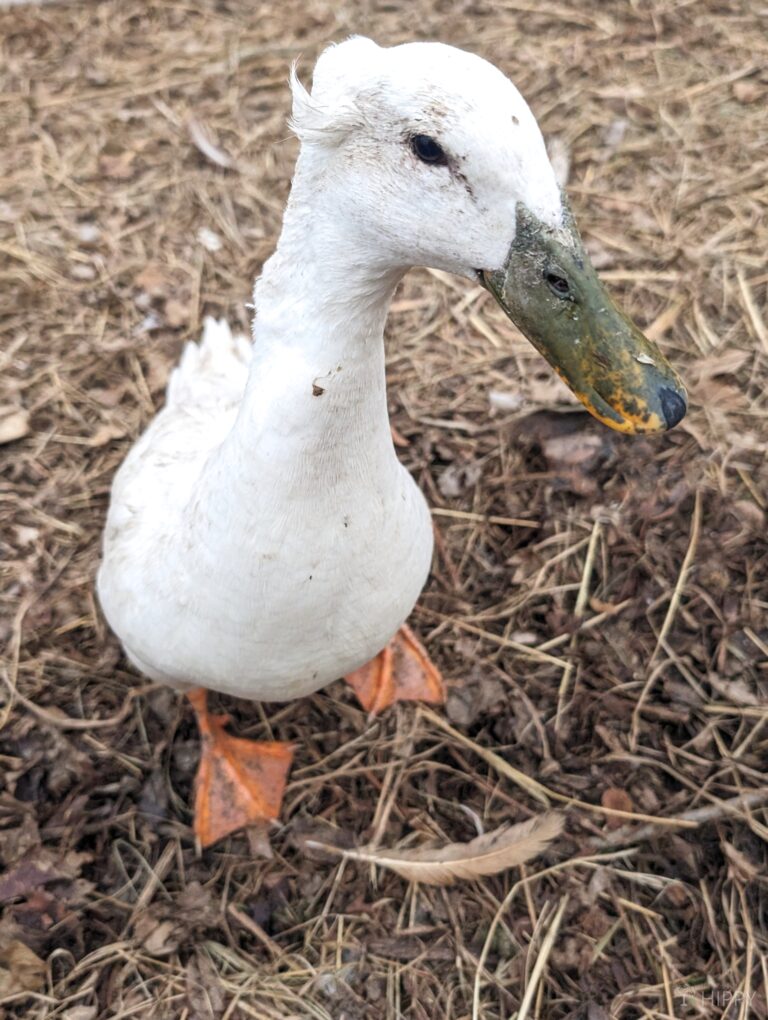
Crested Ducks
Crested ducks are a unique breed that is easily recognizable thanks to their distinctive look. These ducks have a large crest of feathers on their head, which can come in a variety of colors.
Crested ducks are relatively calm and good natured, making them a popular choice for pet owners. In addition to their appealing appearance, crested ducks are also known for being good egg layers.
If you’re looking for a duck that is both beautiful and productive, the crested duck may be the perfect breed for you.
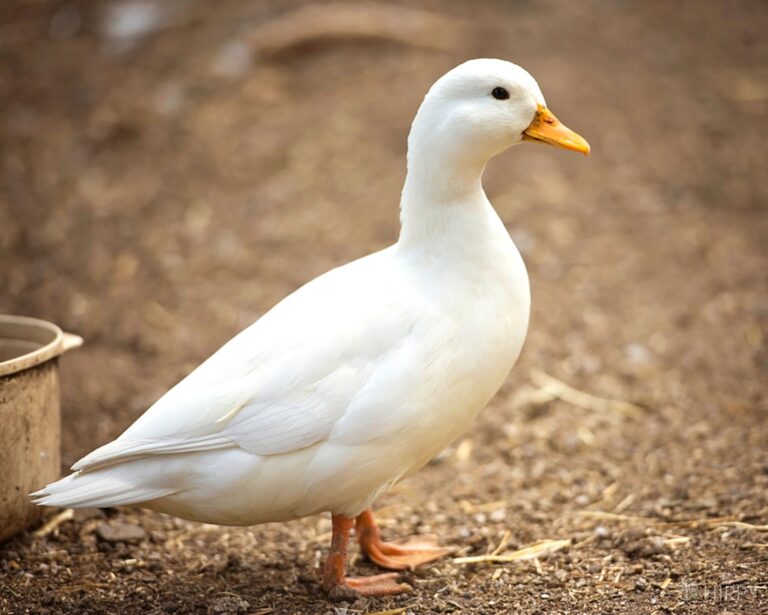
Call Ducks
Call ducks are what most duck hunters will hunt with.
Hunters normally tether a call duck, then wait as the call duck calls out to other ducks in the area. When other ducks come to see what the fuss is about, the hunter springs into action.
They are very small birds which seldom grow to be more than 1 pound. They are miniatures of the duck world. But their voices will more than make up for their size. They are very noisy birds.
Call ducks make perfect friends because of their social skills – they are very talkative – and they are widely used at duck and pet shows. They are lovely companions for kids to learn from.
Australian Spotted Ducks
The Australian Spotted duck is on the critically endangered list. There are currently less than 1000 wild Australian Spotted ducks. The breed really needs help.
They are exceptionally beautiful birds that have three distinct colors: Bluehead, Greenhead, and Silvered. They should not be bred for meat by ANYONE!
They are quite resilient and have a very friendly nature.
They are good flight birds and are very adventurous, therefore, if you do buy a breeding pair, it is recommended that they are completely penned in to encourage breeding, and protect the breed from predators.
They only lay 50 to 125 medium-sized eggs per year. But they are good at tending to their eggs and their offspring.
They only weigh 2 to 2.2 pounds. It is not worth breeding them for meat. The best reason you can have for keeping this breed is their stunning plumage and friendly nature.
They make good pets, and do very well at shows.
Looking at the name, you would be right to think they are from Australia, but they are now considered to be American.
Welsh Harlequin Ducks
The Welsh Harlequin duck is strikingly beautiful. White with a blend of different shades of brown and brown flecks, they are great as show ducks. (They are on the watch list, please help breed responsibly.)
Their lovely appearance and their sweet personalities make them delightful birds for shows and for your homestead.
Welsh Harlequins are perfect as pets and as show birds, for the young ones to learn to work with and learn responsible ownership.
Weighing only 5 pounds (2.3 kgs), they do not require much extra feed, reducing your investment. The real investment in the Welsh Harlequin duck is for eggs. They lay 240 to 340 large eggs per year.
They are excellent foraging birds who do very well in paddocks, pastures, or natural ponds. If you plan on keeping these ducks in runs, make sure the runs are long, with plenty of space to move.
Because they are so docile, they are targeted by predators. Make sure that you provide adequately protected enclosures.
Their gentle nature and beautiful plumage make these ducks popular pets.
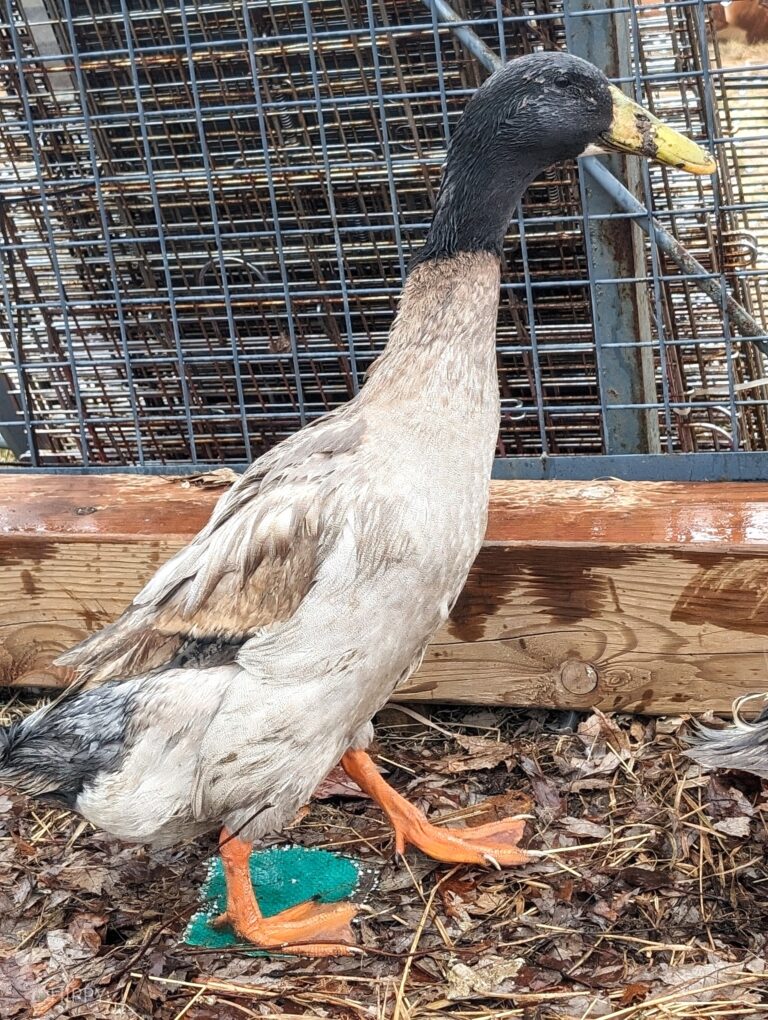
Indian Runner Ducks
If you have ever seen a runner duck in action, you will know why they are called runner ducks.
These delightful ducks are known for their constant rush to get from one place to another. They dash and dart even if they just want to go 2 meters. They are also good jumpers provided the desired destination is low enough.
They have narrow, upright bodies with really long bills. They are popular because they lay an average of 200 to 250 eggs per year. If you have more than one duck, you will have plenty of eggs to spare.
They are very good at removing slugs and snails, to them these pests are as tasty as garlic snails for you.
Note I said for you! Nothing is more yucky than snails for me, or garlic for me. Put the two together, and you can bet I will be the one who brings the ducks to dine!
They weigh 4 to 5 pounds (around 2 kgs), allowing them to hide out in very small spaces.
Because they are foragers, they are always on the prowl for bugs, and they are great fertilizers for your yard.
Just do not let them near your flower beds or vegetable gardens, if you let them have access to these, the only thing you will be eating is eggs, and maybe a duck or two.
The breed was suffering and was on the watch list, but as more and more homesteaders started raising them, they are recovering their numbers. Keep up the good work, my homesteading friends.
Indian Runner Ducks are a type of runner duck that is originally from Malaysia and Indonesia. The ducks get their name from their running gait, which is similar to that of a human.
Runner ducks were first brought to Europe in the 17th century, and they eventually made their way to North America. Indian Runners are often used as pets or for egg production, as they are known for being friendly and easy to care for.
The ducks typically have white feathers with black spots, although there is also a variety of other color patterns. Indian Runner Ducks typically weigh between 3 and 4 pounds, making them one of the smaller breeds of runner ducks.
There are a few popular types of Runner ducks:
Chocolate Runner
As the name suggests, these ducks are chocolate brown in color. They are excellent layers of eggs and are also good for meat production. Chocolate Runners are active and playful, making them popular as pets as well as farm ducks.
Blue Runner
The Blue Runner is a type of duck that is known for its distinctive blue plumage. These ducks are native to North America and can be found in both wild and domestic populations. Blue Runners are relatively small ducks.
White Runner
The White Runner duck is a popular breed of domestic duck. As the name suggests, they are characterized by their white plumage.
White Runner ducks are also known for their egg-laying abilities, and they are often kept as backyard pets or farm animals. Although they are not as large as some other breeds of ducks, they are still sizable birds.
Black Runner
The Black Runner is a tall, slender bird with long legs and a long neck. The body is black with white wings and a white chest. The bill is black, and the eyes are orange.
The Black Runner is a very active bird and is an excellent runner and flyer. It is also an excellent swimmer.
Conclusion
Ducks are easy to raise, and can bring many benefits to you and your homestead. Their eggs are of significant nutritional value than chicken eggs.
If you can help, breed ducks that are on the watchlist as being in danger of dying out completely. Homesteaders have been at the forefront of bringing breeds back from the brink.
It is very important that you carefully consider each breed and weigh up whether they match your expectations or needs.
They are great pets and great for teaching kids responsibility, while bringing them much joy.
Also, remember that sex can get very rough for the ducks, you will need at least 4 to 5 ducks per drake so that they are not overbred.
Consider:
- Your purpose
- Egg production
- Size
- Availability
- Ability to fly
- Foraging
- Popularity
- Mothering tendencies
- Personality
- Looks
- Housing needs
- Cost
You will find much fun, entertainment, and benefit from raising any duck breed, but some breeds are better for specific needs.
As homesteaders, no one is as qualified as we are to help bring up the populations of breeds that are at risk of becoming extinct. All they need is a water source, and a paddock to forage for food.
I hope that this guide will help you choose the right breed for you.
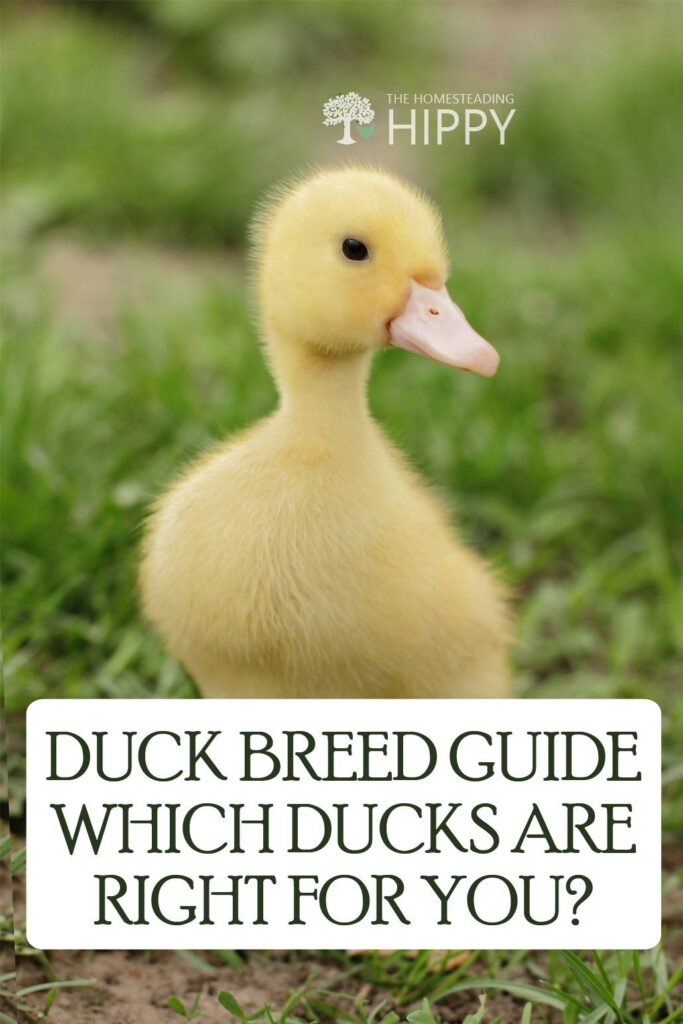
last update: August 2nd 2022
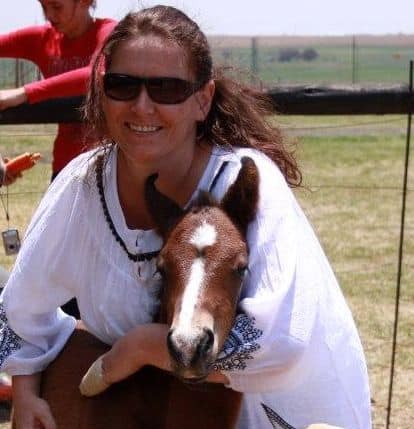
Di-Anne Devenish Seebregts was raised in an environment where daily life consisted of hiking, environmental conservation, growing fruit and vegetables, and raising poultry for meat and eggs.
She combined her passion for the writing word with her love of the pride that comes with not relying on others. She raised three children (who are now adults) to value the environment, and understand the value of being self-sufficient.
Find out more about Di-Anne on our About Us page.
